Potřebujeme váš souhlas k využití jednotlivých dat, aby se vám mimo jiné mohly ukazovat informace týkající se vašich zájmů. Souhlas udělíte kliknutím na tlačítko „OK“.
ASTM D1143/D1143M-07(2013)
Standard Test Methods for Deep Foundations Under Static Axial Compressive Load
Automaticky přeložený název:
Standardní zkušební metody pro hluboké základy při statickém Axial tlakovou silou
NORMA vydána dne 15.6.2013
Informace o normě:
Označení normy: ASTM D1143/D1143M-07(2013)
Poznámka: NEPLATNÁ
Datum vydání normy: 15.6.2013
Kód zboží: NS-16447
Počet stran: 15
Přibližná hmotnost: 45 g (0.10 liber)
Země: Americká technická norma
Kategorie: Technické normy ASTM
Kategorie - podobné normy:
Zemní práce. Hloubicí práce. Budování základů. Podzemní práce
Anotace textu normy ASTM D1143/D1143M-07(2013) :
Keywords:
axial static pile capacity, field testing, jack, load cell, loading procedure, reference beam, ICS Number Code 93.020 (Earth works. Excavations. Foundation construction. Underground works)
Doplňující informace
| Significance and Use | |||||||||||||||||||||
|
4.1 Field tests provide the most reliable relationship between the axial load applied to a deep foundation and the resulting axial movement. Test results may also provide information used to assess the distribution of side shear resistance along the pile shaft, the amount of end bearing developed at the pile toe, and the long-term load-deflection behavior. A foundation designer may evaluate the test results to determine if, after applying an appropriate factor of safety, the pile or pile group has an ultimate static capacity and a deflection at service load satisfactory to support a specific foundation. When performed as part of a multiple-pile test program, the designer may also use the results to assess the viability of different piling types and the variability of the test site. 4.2 If feasible, without exceeding the safe structural load on the pile(s) or pile cap, the maximum load applied should reach a failure load from which the Engineer may determine the ultimate axial static compressive load capacity of the pile(s). Tests that achieve a failure load may help the designer improve the efficiency of the foundation by reducing the piling length, quantity, or size. 4.3 If deemed impractical to apply axial test loads to an inclined pile, the Engineer may elect to use axial test results from a nearby vertical pile to evaluate the axial capacity of the inclined pile. 1.1 The test methods described in
this standard measure the axial deflection of a vertical or
inclined deep foundation when loaded in static axial compression.
These methods apply to all deep foundations, referred to herein as
1.2 This standard provides minimum
requirements for testing deep foundations under static axial
compressive load. Plans, specifications, and/or provisions prepared
by a qualified engineer may provide additional requirements and
procedures as needed to satisfy the objectives of a particular test
program. The engineer in responsible charge of the foundation
design, referred to herein as the Engineer, shall approve any
deviations, deletions, or additions to the requirements of this
standard.
1.3 This standard allows the following test procedures:
1.4 Apparatus and procedures herein designated “optional” may produce different test results and may be used only when approved by the Engineer. The word “shall” indicates a mandatory provision, and the word “should” indicates a recommended or advisory provision. Imperative sentences indicate mandatory provisions. 1.5 A qualified geotechnical engineer should interpret the test results obtained from the procedures of this standard so as to predict the actual performance and adequacy of piles used in the constructed foundation. See 1.6 A qualified engineer shall design and approve all loading apparatus, loaded members, support frames, and test procedures. The text of this standard references notes and footnotes which provide explanatory material. These notes and footnotes (excluding those in tables and figures) shall not be considered as requirements of the standard. This standard also includes illustrations and appendices intended only for explanatory or advisory use. 1.7 The values stated in either SI units or inch-pound units are to be regarded separately as standard. The values stated in each system may not be exact equivalents; therefore, each system shall be used independently of the other. Combining values from the two systems may result in non-conformance with the standard. 1.8 The gravitational system of inch-pound units is used when dealing with inch-pound units. In this system, the pound [lbf] represents a unit of force [weight], while the unit for mass is slugs. The rationalized slug unit is not given, unless dynamic [F=ma] calculations are involved. 1.9 All observed and calculated values shall conform to the guidelines for significant digits and rounding established in Practice D6026. 1.10 The method used to specify how data are collected, calculated, or recorded in this standard is not directly related to the accuracy to which the data can be applied in design or other uses, or both. How one applies the results obtained using this standard is beyond its scope. 1.11 This standard does not purport to address all of the safety concerns, if any, associated with its use. It is the responsibility of the user of this standard to establish appropriate safety and health practices and determine the applicability of regulatory limitations prior to use. |
|||||||||||||||||||||
| 2. Referenced Documents | |||||||||||||||||||||
|
Podobné normy:
Historická
1.3.2014
Historická
1.12.2009
Historická
1.11.2013
Historická
1.11.2013
Historická
1.7.2014
Historická
1.11.2013
Doporučujeme:
EviZak - všechny zákony včetně jejich evidence na jednom místě
Poskytování aktuálních informací o legislativních předpisech vyhlášených ve Sbírce zákonů od roku 1945.
Aktualizace 2x v měsíci !
Chcete vědět více informací? Podívejte se na tuto stránku.


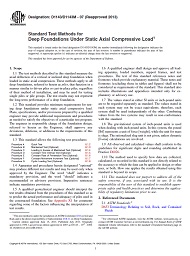
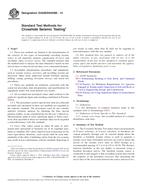 ASTM D4428/D4428M-14..
ASTM D4428/D4428M-14.. ASTM D4429-09a
ASTM D4429-09a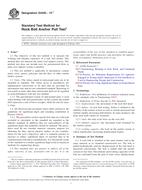 ASTM D4435-13e1
ASTM D4435-13e1 ASTM D4436-13e1
ASTM D4436-13e1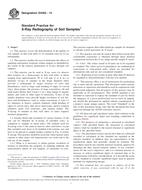 ASTM D4452-14
ASTM D4452-14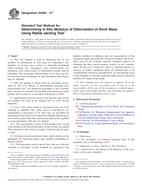 ASTM D4506-13e1
ASTM D4506-13e1
 Cookies
Cookies
